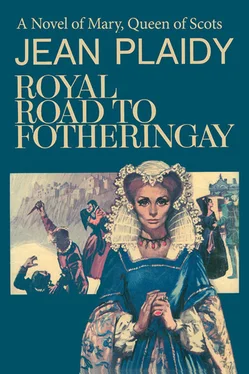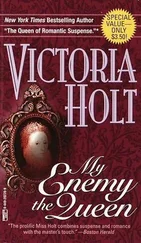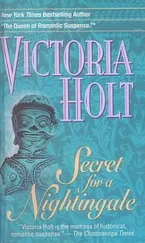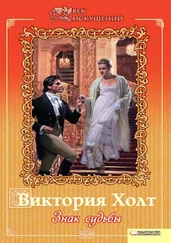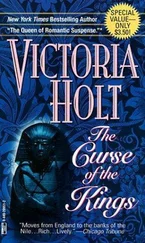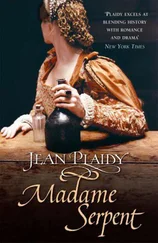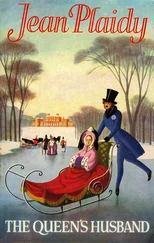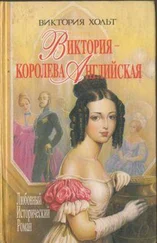She often thought of those letters, which had been read by all the important people of England and Scotland; the whole world discussed them. There were some who declared they were the actual letters and poems Mary had written to her lover; others insisted that they were forgeries. If they were authentic, then Mary was exposed as an adulteress and murderess; if they were false, then Mary’s story remained a mystery which none could ever solve. The testament of tortured men could count for little. Such confessions gave satisfaction to none but those who extorted them, and were worthless.
How clear it all became when she looked back on it. Moray, Maitland, Morton—they were the leaders and they were determined to destroy her. They would show her to her subjects as a murderess and adulteress, for only thus could they rouse the people against her.
Those men, who had certainly been more deeply concerned in the murder of her husband than she had, now banded together and self-righteously sought to force her—with Bothwell—to take all the blame. It was necessary to their policy that she and Bothwell should do so; they had sought to write her epitaph for her own generation and all generations to come: Mary Stuart who was involved with her lover in her husband’s murder for the sake of an adulterous passion.
Would they succeed? How could she know? She could only hope that after she was dead there would be those who sought to sift the truth from the lies and at least do her justice.
“Oh God,” she prayed aloud, “have mercy on me. The thief on the cross was forgiven; but I am a greater sinner than he was. Have mercy on me in this hour of my death as You had on him.”
Would her story have been different, she wondered, if Geordie Dalgleish had not produced the silver casket? Would it have been possible for her to return to her country and reign as its Queen, but for those incriminating letters?
Geordie had been arrested when all Bothwell’s servants had been taken up and tortured with the object of making them confess that Bothwell and Mary—and they alone—had been responsible for Darnley’s murder.
Geordie had been Bothwell’s tailor and, as a servant of the Earl, suspect. Perhaps to curry favor with his tormentors he had shown them the silver casket which he said had been found beneath his master’s bed.
Those revealing sonnets were exposed to the world. She had written to her lover of her innermost feelings; and now the whole world was reading what she had written for his eyes alone. She had written letters to her lover, and those letters must have conveyed her great passion for him; but she surely had never written those cruel words, those brutal words, which were said to have been penned while she sat by Darnley’s bedside!
How angry she had been, how shocked, how humiliated! She had wept tears of rage when she had heard that the poems and letters were being publicly read; but now even that seemed of little moment.
In those early days of captivity her hopes had been high. She had been taken from prison to prison—from Carlisle to Bolton, Tutbury, Coventry, Chatsworth, Sheffield, Buxton, Chartley and finally to Fotheringhay.
Buxton held a bittersweet memory for it was at Buxton that the last of her Marys to be with her—Seton—had come near to marriage with Andrew Beaton.
A sad little story theirs had been. Mary Seton had had one great love in her life and that was for her mistress and namesake. Of the four Marys Seton was the one who had loved the Queen best. Andrew Beaton had fallen in love with the quiet and gentle Seton and had spent seven years trying to persuade her to leave her mistress. Mary had watched them and had longed to see her faithful Seton happily married, as she knew she would have been with such a man as Andrew. Why should Seton spend her life in captivity because her mistress must?
Seton made excuses. She would not marry. She had solemnly vowed herself to celibacy. She would never leave her mistress.
But the Queen wished to see the love story brought to a happy conclusion against the grim background of her prison. It had been a pleasant occupation, during the long evenings, to plan for those two.
It was her idea that Andrew should go to Rome to have Seton’s vow nullified. Andrew had left, and what a sad day it had been for her as well as for Seton when the news had come of Andrew’s sickness and death.
So Seton’s vow was not broken and Seton remained with her mistress seven years after the death of Andrew; but by that time Seton herself was in danger of dying, for the cold and damp of the prisons she shared with the Queen had affected her health so severely that Mary had to command her to go away and save her life.
“I must bear these hardships,” Mary had said. “But there is no need for you to. I would rather have you living away from me, dearest Seton, than staying here a little longer to die.”
So Seton had at last been persuaded, but only when she was too sick for argument, to go to Mary’s aunt Renée at the Rheims convent. How overjoyed Mary would have been could she have accompanied her! But not for Mary was the seclusion of the nunnery; she must endure her damp prisons. She had come near to death through rheumatic fever and, after a miraculous recovery, was often attacked by such pains that she could not walk for days at a time.
And at last she had come to Fotheringhay. There were only a few more hours left to her in this last of her prisons before she passed on to another life.
The long weary years had gone; but many of them had been filled with hopes. There had been suitors for her hand. Norfolk was one, and he had lost his head because he had become involved with her. Did she bring bad luck to those who loved her? Don John of Austria was another. He was dead now—some said he died by poison.
There had been many plots which had filled her with temporary hopes; plots with Norfolk, the Ridolfi plot, and, last of all, the Babington plot.
IT WAS six o’clock on the morning of February 8, 1587.
Turning to her women, Mary said: “I have but two hours to live. Dry your eyes and dress me as for a festival, for at last I go to that for which I have longed.”
But she had to dress herself—her women’s fingers faltered so. They could not see her clearly for the tears which filled their eyes.
She put on her crimson velvet petticoat, her green silk garters and shoes of Spanish leather. She picked up her camisole of finest Scotch plaid which reached from her throat to her waist.
“For, my friends,” she said, “I shall have to remove my dress, and I would not appear naked before so many people who will come to see me die.”
She put on her dress of black velvet, spangled with gold, and her black satin pourpoint and kirtle; her pomander chain was about her neck, and at her girdle were her beads and cross. Over her head she wore white lawn trimmed with bone lace.
“Watch over this poor body in my last hour,” she said to her weeping women, “for I shall be incapable of bestowing any care upon it.”
Jane Kennedy flung herself on her knees and declared that she would be there to cover her dearest mistress’s body as it fell.
“Thank you, Jane,” said Mary. “Now I shall pray awhile.”
She knelt before the altar in her oratory and prayed for the forgiveness of her sins. “So many sins,” she murmured. “So many foolish sins….”
She prayed for poor Anthony Babington who had given his name to the plot which had finally brought her to this … a young man in her service who had loved her as so many had done. Poor Anthony! He had paid the price of his devotion. He had suffered horrible torment at Tyburn, that crudest of deaths which was accorded to traitors.
And now she herself faced death.
Читать дальше
